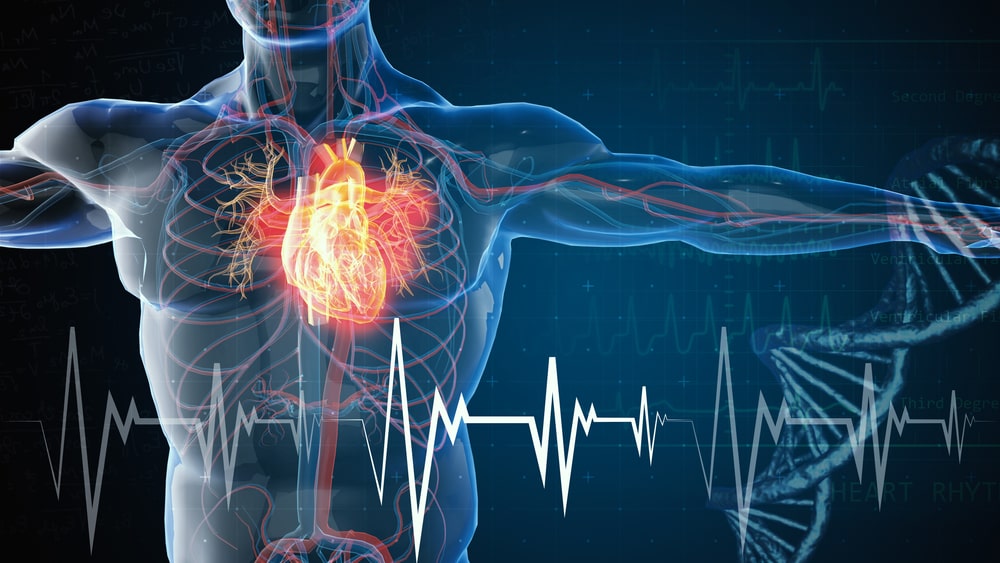Diet, Exercise and Cardiovascular Disease
Diet Exercise Cardiovascular Disease Cardiovascular disease is the number one killer in the Western world and affects people increasingly as they get older. Being our number one killer, it gets a lot of attention in the media and from our health services. The received wisdom is that we should all stop smoking, drink less and avoid saturated fat.
Meanwhile those with established cardiovascular disease, and those thought at risk of future cardiovascular disease, are put on drugs to modify their blood cholesterol and blood pressure. While the advice to stop smoking and to drink less is undoubtedly grounded on good evidence the other cornerstones of modern-day prevention and treatment of cardiovascular disease are more controversial.
Diet Exercise Cardiovascular Disease What is cardiovascular disease?
Cardiovascular disease covers a number of distinct conditions and therefore there are a number of possible causes. The main cardiovascular conditions that can cause early death are:
Atherosclerosis, perhaps the best known, when arteries clog up. This narrows the arteries and creates conditions in which the artery ultimately becomes blocked. If the artery is a coronary artery, one of those that provide oxygen for the muscles around the heart, then a heart attack follows. If the artery is a carotid artery supplying oxygen to the brain then a major stroke occurs. Heart attacks have a posh name, myocardial infarction. Basically myo stands for muscle, cardio for heart and infarction to tissue destruction due to lack of oxygen. Which neatly sums up what happens when a coronary artery is blocked.
Aneurysms, which are ballooning blood vessels that occur when the blood vessel walls becomes too weak to cope with the local blood pressure. If an aneurysm bursts then a hemorrhage occurs and the lack of blood and the oxygen it carries to vital organs such as the heart and brain can be fatal. In the UK, according to NHS sources the incidence of death from burst aneurysms is about 4-5% that for the atherosclerosis related heart attacks and strokes. Roughly 9,500 per year versus 162,000 per year.
Heart failure occurs when the muscle that makes the heart beat becomes ineffective.
This is due to a previous heart attack in about 2 out of every 3 cases. It can also be caused by failure of the valves in 4% of cases, very high blood pressure, also 4%, alcohol and viruses, again 4% of cases. The remaining 20% have unknown causes. Using figures from the USA, I estimate that between 40-50,000 people die from this every year in the UK. In other words it is more common than aneurysm related death, but less common than death from heart attacks and strokes resulting from blocked arteries.
Arrhythmias are heart beats that become irregular, extremely fast or slow as a result of abnormal electrical activity in the heart. They are very common, but normally only prove fatal when a serious prior event such as a heart attack has already taken place.
So what causes cardiovascular disease?
The conditions described above are clearly worth avoiding.
Diet Exercise Cardiovascular Disease The main changes that occur in the body to cause the problems above are narrowing of arteries, weakening of blood vessels and damage to the heart muscle. Narrowing of arteries due to atherosclerosis is the most important factor in all of this, causing nearly all heart attacks and about 85% of strokes (15% are caused by hemorrhage). What exactly are the causes cardiovascular disease? Below I list and then examine those factors that are well-known, and those that have strong evidence to support them.
Blood Cholesterol levels, specifically cholesterol carried in the blood by low density lipoproteins
High blood pressure, specifically by causing damage to the lining of blood vessels. In some salt sensitive people, too much salt raises blood pressure.
Dietary cholesterol intake from foods such as eggs and prawns.
Intake of saturated fats from foods such as red meats and cheese.
Intake of damaged fats such as artificial trans fats.
Ratios and overall intake of polyunsaturated fats.
Blood sugar levels.
Blood Cholesterol levels are rather more complex in their effects than most people are aware. While low cholesterol levels are associated with a reduced incidence of heart attacks they are also associated with a greater risk of death, with depression, cancer, stroke and atrial fibrillation. This should give us pause when considering the importance of lowering cholesterol levels in people with anything other than established cardiovascular disease.
For most of us a level that is classified as borderline-high such as between 200-240 dL/L (5.1-6.2 mmol/L) would probably be an optimal level. There is evidence that higher levels protect against many types of strokes, especially hemorrhagic stroke where bleeding from blood vessels causes death.
Diet Exercise Cardiovascular Disease The above should not be surprising if you consider the role of cholesterol in the body.
It is an integral part of all our cell membranes, and is a precursor for many of our hormones, including vitamin D, which increasingly is being associated with reduced risk of many serious diseases.
High blood pressure is associated with increased risk of cardiovascular disease. However the risk from high blood pressure is also dependent on the quality of the blood vessels. Damage to blood vessels is normally repaired, and if we consume the right diet it is likely that our blood vessels will repair themselves more quickly.
Dietary cholesterol was the initial target of Government advice. However it turns out that cholesterol from foods such as prawns, liver and eggs do not raise cholesterol levels in most people and even if they did this may not be so bad a thing. In fact these high cholesterol foods are some of the most healthy in the diet containing a large amount of important micronutrients such as vitamins A, D and E as well as minerals such as iron (liver), iodine (prawns) and antioxidants (eggs and prawns).
Saturated fat has become increasingly the bad guy in Government
Diet Exercise Cardiovascular Disease campaigns of late, but is it so bad? Saturated fat has been in our diet ever since we evolved into human beings, you’d have thought our bodies would have learnt how to deal with it by now, and in fact there is plenty of evidence that suggests just that.
A review in 2011 of 21 intervention studies carried out over the previous decade found no reduction in risk of death from cardio-vascular disease after interventions to reduce or replace saturated fat with carbohydrate or polyunsaturated fats. Clearly typical foods that contain saturated fat are no worse for us than those containing carbohydrate or polyunsaturated fat.
Damaged fats have increasingly come under the spotlight over the last two decades. They are fats that have been heated to very high temperatures in their manufacture (or during cooking). When heated above about 160C, the molecules that they are formed from become changed into forms that the human body does not recognize. Foods such as margarine and most packaged goods containing vegetable fats contain these damaged fats. They are clearly linked with an increased risk of cardiovascular disease.
Ratios of polyunsaturated fats to various other types of fat have been investigated by quite a number of studies.
Most show that polyunsaturated fats when increased as a total proportion of calories reduce the likelihood of cardiovascular disease. Without boring you with the detail, this is most likely due to the presence of omega 3 fats such as those found in oily fish. Omega 3 fats have a potent effect on risk of cardiovascular disease and outperform statins in many studies.
Blood sugar levels get a lot of attention in those with diabetes, but very little in those without this condition. Basically if you wander around with blood sugar levels that are too high, your risk of cardiovascular disease is greatly increased. It is very important to make sure your diet does not lead to chronically raised blood sugar levels. For many this will mean reducing what is called the glycaemic load of their diet. In short try to moderate your intake of sugary drinks, cakes, sweets and puddings as well as starchy items that breakdown into sugars before being absorbed from your digestive tract. These include bread, rice and potatoes.
What does this mean for my diet and lifestyle?
A diet that reduces your risk of cardiovascular disease and the damage it causes through heart attacks and strokes would follow the general principles below:
Diet Exercise Cardiovascular Disease Reduce the amount of junk food you eat. This is a very general point, but junk food generally has too much salt, sugar, additives and trans-fats. All of these make cardiovascular disease more likely. Examples include foods from takeaway burger joints, ready meals from supermarkets and drinks of fizzy pop.
Eat more fruit and especially vegetables. Again this is a big food group, but many fruits and vegetable contain nutrients that help protect and repair your blood vessels from damage. Examples include tomatoes which when cooked provide a high dose of lycopene to quell oxidative damage to blood vessels, cooked beetroot which can release substances that relax your blood vessels and plants of the allium family, such as garlic, onions and leeks prevent blood clotting and narrowing of arteries.
Try and incorporate some omega 3 fats into your diet.
The most effective way of doing this is through oily fish such as mackerel, herring, trout, sardines, pilchards, kippers and tuna (not the canned stuff). One issue with these fish is that they can accumulate high levels of toxic heavy metals and pesticides in their fatty tissues. This is the reason pregnant women are sometimes advised to moderate their intake of them. One way to get round this is by using fish oils that have been processed to remove these contaminants. For vegetarians, omega 3 can be obtained from seaweed extracts. Linseed oils may also be effective in those with the ability to convert its omega 3 fat into a more potent form.
When it comes to cholesterol and saturated fats I wouldn’t worry too much. If they come from good sources such as pasture fed cows, free range organic chickens then you will probably derive more benefit than harm from them. As stated above the evidence linking cholesterol and saturated fat intakes with heart disease is not consistent and is skewed by the massive interest of the drug companies in funding studies that attempt to make the link to justify their drug sales.
Diet Exercise Cardiovascular DiseaseI’ve not covered exercise
in this article, but regular daily exercise is very effective at reducing cardiovascular disease risk. Any exercise will be beneficial if it builds progressively on your current capabilities.
For some this may mean walking an increasing distance at increasing speeds each day. Some resistance training is helpful for those who are already at a basic standard of fitness.
For those with existing cardiovascular disease care should be taken, but it will be very beneficial as long as your body responds to the training without a crisis event. Consult a doctor or other professional involved personally with your healthcare if this is the case. For those who are already fit and wondering what is best for their cardiovascular health, then the general rule is to build fitness steadily and recover well from hard sessions.
Normally what makes you fitter will also be good for you, if training is wearing you down it is good for neither your fitness or health.



